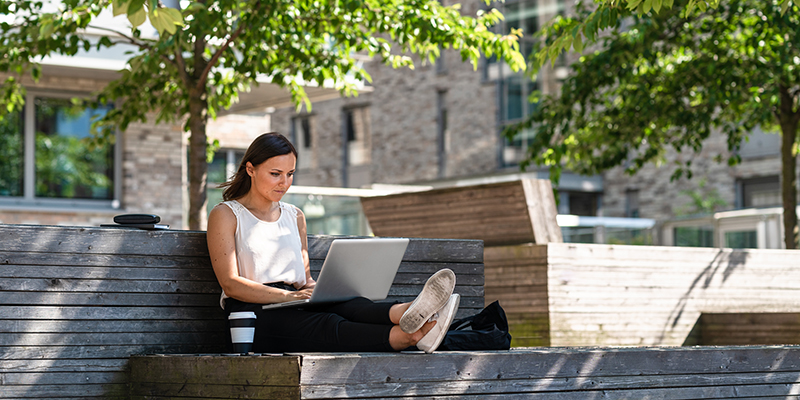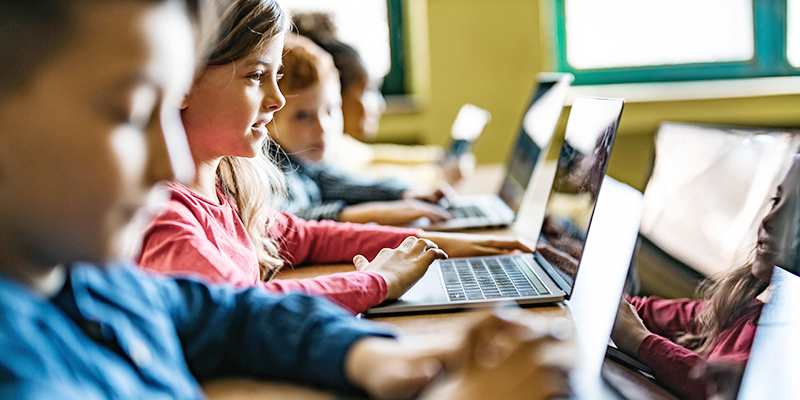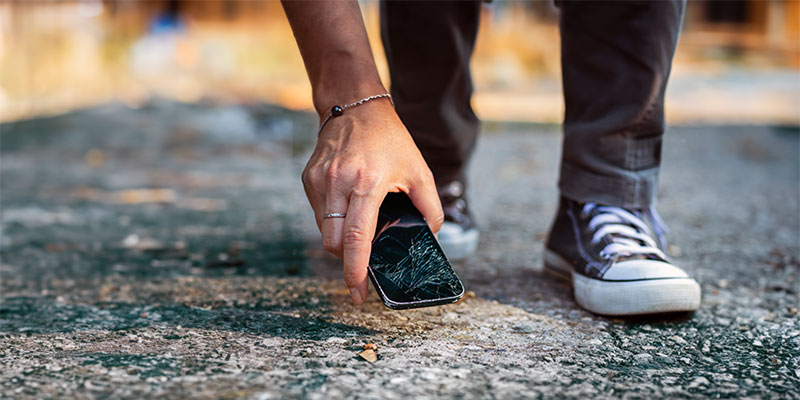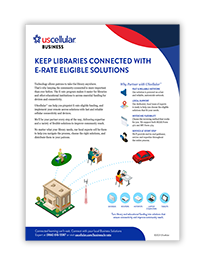Beyond the Parking Lot: How Libraries Are Using Emergency Funding to Keep Communities Connected
It has been two years since March 2020, when schools across the country converted to a remote learning model, libraries also closed their doors. Libraries scrambled to serve patrons from their parking lots and find ways to loan devices to keep the community connected online.

“The closure of many libraries means that library patrons who were previously dependent on computer and Internet access at their local libraries lost their primary source of broadband access…libraries across the country also have attempted to assist patrons in meeting their connectivity needs during the pandemic,” said an FCC report.
Like schools, libraries for years have relied on the E-Rate program to fund Internet access and telecommunications services, but with the enactment of the American Rescue Plan on March 11 and a subsequent $7.1 billion available from the Emergency Connectivity Fund Program (ECF), additional aid is available.
ECF funding allows libraries and schools to seek 100% reimbursement for eligible equipment and connected services. These purchases, made between July 1, 2022 and December 31, 2023, must be used to implement services and equipment including:
- Broadband connectivity beyond the library campus (kiosks, households, school buses, churches, etc.)
- Wi-Fi hotspots, modems, routers, and devices that combine a modem and router
- End-user connected devices—a laptop computer, tablet computer or similar device that can connect to qualifying broadband networks
While libraries must use ECF funding primarily for educational purposes, they’re not restricted to loaning devices only to K-12 students. In fact, the ECF defines “educational purposes” as activities that are integral, immediate and proximate to the provision of library services to all library patrons, including staff.
Pushing Services Beyond Library Walls
When libraries first closed their doors in 2020, patrons who relied on them for internet access were disconnected, but the American Library Association (ALA) responded quickly, sending a recommendation that all public libraries turn on Wi-Fi 24/7 and transmit to the library grounds and surrounding neighborhoods.
Since then, libraries have stepped up to serve their communities, finding technologies and old-fashioned ingenuity to keep patrons connected no matter their location. A vast majority have implemented hotspot lending programs through cellular partners while broadcasting Wi-Fi beyond the physical library building.
“Our tiny little branch had multiple families utilizing Wi-Fi from their cars to complete homework assignments, apply for a job or unemployment, connect with their family—whatever virtual thing is happening,” said Kate Lasky, director of the Josephine Community Library District in southern Oregon. “We've had patrons check out equipment, sit in their car, complete their work and return it within a couple hours.”
In some communities, libraries are taking books and connectivity out to their patrons via bookmobiles, enticing the community out of their homes to grasp that connection to literature and each other. Some libraries even provide touchless drop off to a patron’s front porch.
Robert Bocher, senior fellow of the ALA office of Public Policy and Advocacy, noted that many libraries also set up mobile kiosks outside shopping malls, community centers, laundromats, parks, etc. and thinks they will purchase even more devices to lend to patrons. “I’m pleased to see hotspots and tablets are eligible for funding and it’s going to help both libraries and schools,” he said.
“I’ve worked with 200 libraries to date across the country,” said Dustin Li, director of the Information Disaster Resource Center, in a GigLibraries.net webinar. “Patrons who were working with a very weak signal outside the library really appreciate having an access point so they can get a stronger signal.”
Mr. Li recommends that libraries continue to:
- Mount access points outside the building
- Push Wi-Fi to the parking lot, lawn and playgrounds where parents might watch children while working on the internet
- Provide hardware and installation free of charge
Choosing a Cellular Provider to Deliver Advanced Solutions Built for Community Outreach
A cellular partner with experience assisting libraries can serve as the enablement arm to help guide you through implementation and application processes. Look for a partner with a strong track record of helping libraries navigate a new, virtual world to provide:
- An In-house E-Rate Specialist to help you navigate the application process and provide consultative reviews to help you achieve long-term goals
- A Local Solutions Expert committed to support in your community
- Secure Networks to protect patrons by employing mobile device management and private networks
- Stable Connections to continue educating with high-speed internet on a reliable 5G mobile network
- Connected devices such as hotspots, smartphones, laptops and tablets
- Seamless Collaboration to connect and work in and out of the library with cloud-based communications, messaging and video conferencing
UScellular™ works with libraries in both urban and rural settings to connect patrons to the internet through secure private networks, mobile hotspots, connected devices, cloud-based communications and local expert guidance. We also provide an E-Rate/ECF specialist on hand to answer questions and guide you through the arduous application process. Contact your local business expert at 866-616-5587 or visit Remote Learning to get started.
Keep Libraries Connected with E-Rate Eligible Solutions
Technology allows patrons to take the library anywhere. That’s why keeping the community connected is more important than ever before. Ask UScellular about help with emergency funding.





